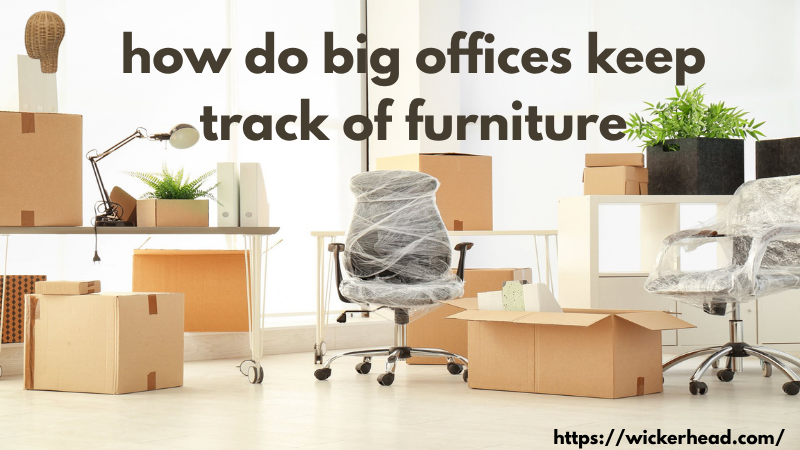How do big offices keep track of furniture? It’s a surprisingly important question in the world of corporate management. In a workspace with hundreds—or even thousands—of desks, chairs, filing cabinets, and modular units, managing office furniture goes far beyond just placing orders and deliveries. Smart companies use a mix of systems, tagging, digital tools, and internal policies to monitor every item. This article explores the practical methods large organizations use to track their furniture assets efficiently, avoid waste, and ensure smooth operations.
Table of Contents
1. Why Office Furniture Tracking Matters
Before diving into methods, it’s important to understand why this task is so vital for large-scale organizations.
Cost Control
Furniture represents a significant capital investment. Without proper tracking, loss or duplication can lead to unnecessary spending.
Space Optimization
Knowing where each item is placed helps facilities teams optimize layouts, especially in hybrid or rotating desk environments.
Regulatory Compliance
For government or regulated industries, asset tracking supports financial audits and depreciation records.
Sustainability Goals
Tracking furniture helps companies reuse or repurpose assets, reducing landfill waste and contributing to ESG goals.
2. Asset Tagging: The First Step to Furniture Tracking
Most large companies start by labeling each piece of furniture with a unique identifier.
Barcode Stickers
Barcoded tags are attached to desks, chairs, and cabinets, allowing easy scanning with handheld devices during audits.
RFID Tags
For more advanced setups, RFID (Radio-Frequency Identification) tags allow items to be scanned in bulk without direct line of sight.
QR Codes
Some companies opt for QR tags linked to cloud databases, allowing employees to report issues or request moves via smartphone.
Tamper-Proof Labels
To prevent swapping or misplacement, tags are made tamper-proof and often embedded in hidden locations.
3. Furniture Asset Management Software
Digital tools are essential for keeping track of hundreds or thousands of furniture pieces across floors or buildings.
Cloud-Based Systems
Platforms like Asset Panda or EZOfficeInventory help teams track, move, and audit furniture in real time.
Integration with IT
These systems often integrate with company IT asset platforms or facilities management software for holistic reporting.
Mobile Accessibility
Facilities staff can access databases on tablets or phones while walking the floor, scanning furniture tags on the go.
Real-Time Updates
Each time a desk is moved or a chair is replaced, the change is logged in the system instantly to keep records up to date.
4. Mapping Furniture with Floor Plans
Large companies visualize furniture on digital floor maps to see placement, availability, and layout efficiency.
Interactive Floor Plans
Using CAD software or integrated platforms, each room is mapped with its contents and updated after every shift or move.
Color-Coding for Status
Desks might be marked in different colors for available, reserved, damaged, or in-use status.
Planning Office Moves
When an office reconfigures its layout, these maps allow easy drag-and-drop planning of furniture and team zones.
Shared Workspaces
In hybrid workplaces, furniture mapping helps track hot desks or booking-based seating systems.

5. Regular Physical Audits and Spot Checks
No system is complete without periodic in-person verification to catch errors or missing items.
Scheduled Audits
Most companies perform quarterly or annual physical audits to validate asset records against reality.
Random Spot Checks
For added accuracy, facilities teams conduct random floor checks to verify tags and placements.
Digital Checklists
Auditors use mobile apps synced with the furniture database to confirm each item and flag discrepancies.
Issue Reporting
Missing or damaged items are reported immediately and flagged for repair or investigation.
6. Move Management and Change Tracking
Tracking furniture becomes especially important during office relocations or redesigns.
Pre-Move Inventory
Before a move, all items are scanned and logged to establish a baseline inventory.
In-Transit Tracking
As items are moved, teams track them using barcodes or RFID to avoid misplacement or loss.
Post-Move Reconciliation
After setup in the new location, a second audit ensures that all tagged furniture has arrived and is in the right place.
Project Documentation
Each change is documented in the system for future reference or audits.
7. Responsibility Assignment and Accountability
Assigning responsibility helps reduce furniture loss or misuse in large organizations.
Department Ownership
Some companies track furniture by department—each team is accountable for the assets within their space.
Employee Checkouts
Chairs, ergonomic tools, or mobile pedestals may be assigned to individual employees, especially in hybrid setups.
Facilities Oversight
A central facilities team manages overall tracking and audits, ensuring consistency across floors.
Escalation Policies
If furniture is missing or damaged, internal protocols determine who is responsible and what steps are needed.
8. Furniture Lifecycle Tracking
From purchase to retirement, each piece of furniture goes through a lifecycle that’s monitored closely.
Purchase Records
Initial entry includes vendor details, invoice number, cost, and purchase date—crucial for depreciation and audits.
Maintenance Logs
Any repairs or servicing are logged, especially for ergonomic or adjustable furniture that may wear faster.
Usage History
Some software records which floors or teams a piece has served, helping identify overuse or misuse.
End-of-Life Disposal
When an item is retired, it’s logged with a disposal method—resale, donation, or recycling. Learn more about repurposing ideas at WickerHead.com.
9. Data Security and Access Control
Since asset systems can contain sensitive information, access is controlled carefully.
Role-Based Permissions
Only authorized staff can modify asset records or assign furniture in the system.
Audit Trails
Changes made to records are tracked by user, time, and reason for transparency.
Cloud Backup
Furniture data is stored securely in the cloud with routine backups in case of system failures.
External Audits
Large enterprises may undergo third-party audits to validate records for compliance or insurance purposes.

10. Trends in Smart Office Furniture Management
As workspaces evolve, furniture tracking is becoming more automated and intelligent.
IoT-Enabled Desks
Some smart desks come with built-in sensors to track usage patterns and availability in real time.
AI-Driven Insights
Analytics tools are helping companies analyze which areas are underused and what furniture types are most popular.
Sustainability Reporting
Furniture lifecycle data is being used to track environmental impact and support green certifications.
Integrated Ecosystems
Modern systems connect furniture, lighting, climate control, and occupancy monitoring into a single dashboard.
FAQs About Office Furniture Tracking
1. Do all companies use furniture tracking systems?
Large corporations and enterprises almost always use asset tracking tools, while smaller offices may rely on spreadsheets or manual tracking.
2. Can RFID help track furniture without scanning?
Yes, RFID allows bulk scanning and real-time tracking of furniture without needing a direct scan, ideal for large inventories.
3. How often should physical audits be done?
Most companies audit at least once a year. High-traffic offices may conduct quarterly audits to stay accurate.
4. What happens to untracked or lost furniture?
It’s flagged during audits and investigated. If irretrievable, it’s written off and often reported for internal accountability.
5. What’s the best software for furniture tracking?
Popular tools include Asset Panda, EZOfficeInventory, and OfficeSpace Software (source).
Conclusion: How Do Big Offices Keep Track of Furniture? With Tech, Teams, and Tactics
So, how do big offices keep track of furniture? They use a mix of asset tagging, software tools, floor mapping, and regular audits to manage every chair, desk, and drawer. It’s not just about knowing what they have—it’s about maximizing usage, reducing loss, and staying ready for moves or inspections. As office designs get smarter and work models become more flexible, furniture tracking is becoming an essential part of modern facilities management. For more ideas on sustainable furniture reuse and smart office tips, check out WickerHead.com.
